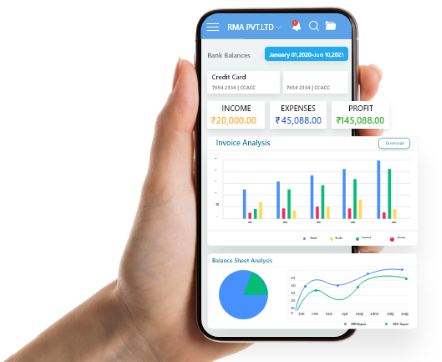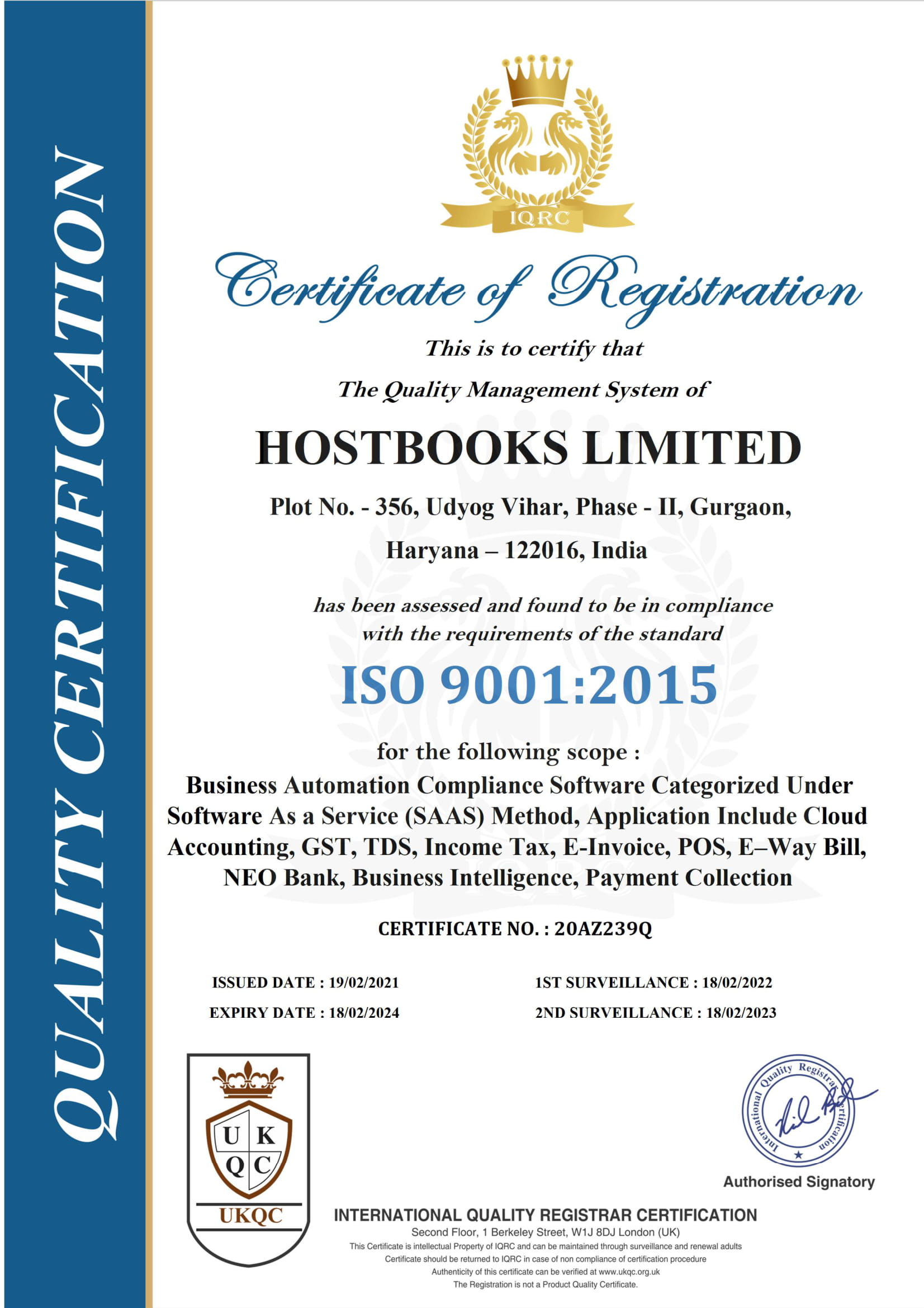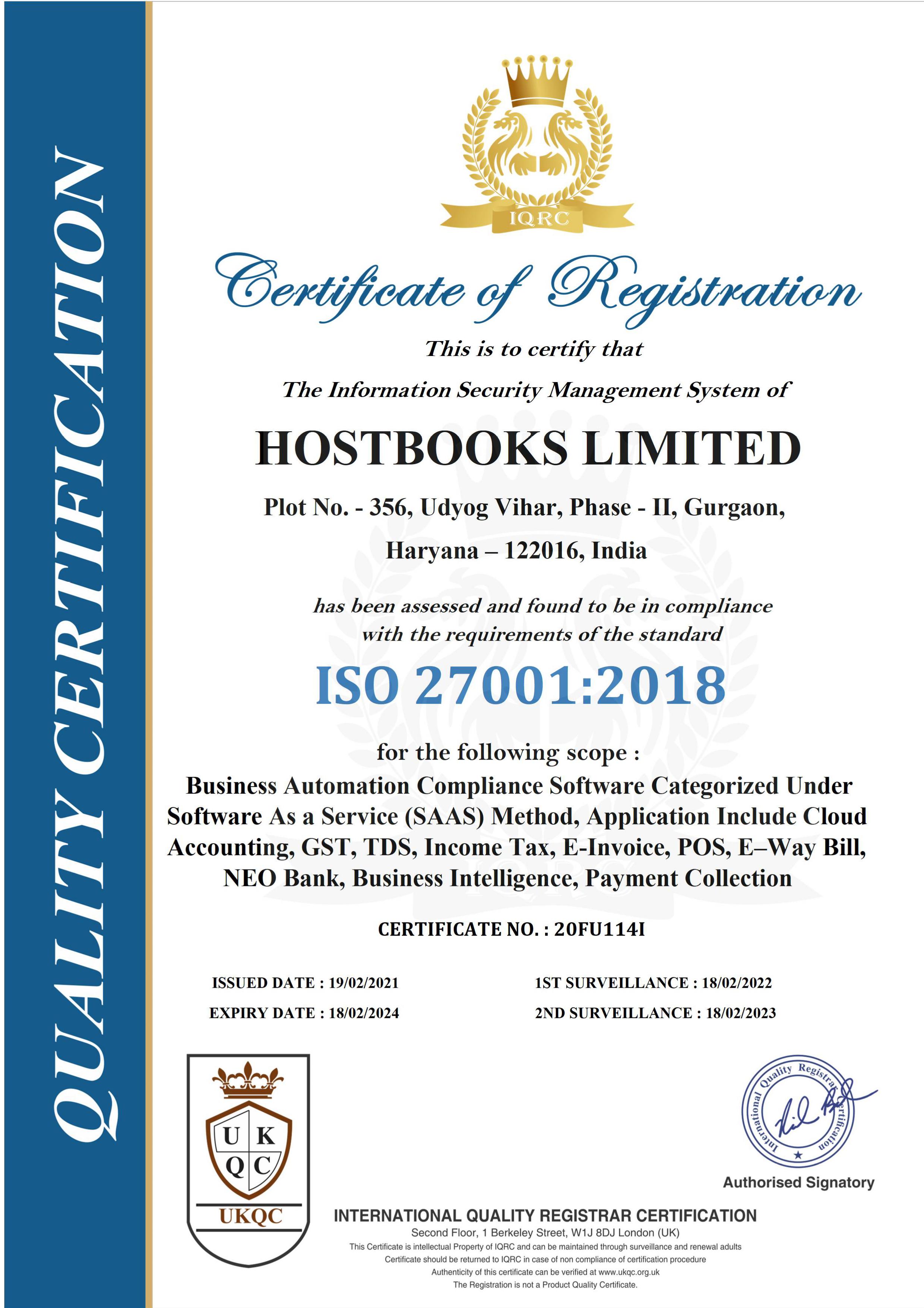FAQs related to TDS
| Form 24Q, Form 26Q, Form 27Q, Form 27EQ | |||
| Quarter | Period | TDS for Government/Non-Government Deductors | TCS |
| Q1 | 1 Apr - 30 June | 31st July | 15th July |
| Q2 | 1 July - 30 Sept | 31st Oct | 15th Oct |
| Q3 | 1 Oct - 31 Dec | 31st Jan | 15th Jan |
| Q4 | 1 Jan - 31 Mar | 15th May | 15th May |
Delay in filing TDS:
As per section 234E w.e.f. July 1, 2012, if a person fails to submit TDS return on the due date, then a penalty of Rs. 200/- per day is charged till the default continues. However, the amount should not exceed the total tax amount.
Non-filing of TDS/Furnishing incorrect info:
Penalty is also levied in case of non-filing or if some incorrect information has been furnished. The amount should not be less than Rs. 10,000/- and not more than Rs. 1,00,000/- u/s 271H of the IT Act, 1961.
- Password for Form 16/16A, transaction based report and Form 27D zip files is TAN of deductor.
- Password for conso file is 'TAN_
' (eg. ABCD12345E_67890). Request number should be of one of the requests submitted. - Password to unzip Justification Report is 'JR_
_
- Download the zip file from 'Requested Downloads' screen and save it in your system.
- Unzip the file using Winzip. Password to unzip is 'JR_
_ - Download the macro utility for Justification Report from the screen.
- Double-click on utility, excel sheet will open.
- Click on enable content in the warning message to enable macros.
- Select the Justification Report text file and the folder to save the output excel file and click on the button ‘Generate TDS CPC Justification Report’.
- The text file will be converted into excel spreadsheet and saved in the selected folder.
- Open the Justification Report excel file from the concerned folder.
| S.NO | FOURTH CHARACTER of PAN | STATUS OF ASSESSEE |
| 1 | P | INDIVIDUALS |
| 2 | H | HINDU UNDIVIDED FAMILY |
| 3 | F | FIRMS |
| 4 | C | COMPANY |
| 5 | T | TRUSTS |
| 6 | A | ASSOCIATION OF PERSONS |
| 7 | B | BODY OF INDIVIDUALS |
| 8 | L | LOCAL AUTHORITY |
| 9 | J | ARTIFICIAL JUDICIAL PERSON |
| 10 | G | GOVERNMENT |
FAQs related to GST
GSTR-1
- This is a monthly return containing details of outward supplies (sales) made during the tax period. Every regular registered person is required to file GSTR-1 irrespective of whether there are any transactions during the month or not. It has a provision for ‘NIL Return’ as well.
- Every regular registered persons having aggregate turnover of up to 1.5 crore rupees in the preceding financial year or the current financial year, may opt to file GSTR-1 on quarterly basis.
GSTR-2
GSTR-2 is a monthly return containing details of purchases or inward supplies, to be filed by every registered person under regular scheme. (This is not in operation since implementation of GST)
GSTR-3
GSTR-3 is a monthly GST return that is generated by extracting information from GSTR-1 & GSTR-2. It shows the amount of liability for the month, to be filed by every registered person under regular scheme. (This is not in operation since implementation of GST)
GSTR-3A?
This is the tax notice issued by the tax authority to a defaulter who fails to file GST returns.
GSTR-4
This is a return for taxpayer registered under composition scheme in GST. Earlier it was filed on quarterly basis but after April 1, 2019 [i.e. from F.Y. 2019-20] it will be filed on annually, it contains all the details of purchases, sales, and tax paid for a given financial year.
CMP-08
This is a payment form to be filed by the composition dealer. This is a new form introduced w.e.f. April 1, 2019 [i.e. from F.Y. 2019-20] and to be filled on quarterly basis. It contains details of tax payable on outward supplies and inward supplies under reverse charge.
GSTR-4A
GSTR-4A is an auto-drafted and read only form, where all the B2B purchases and TDS credit are auto-populated based on the information furnished in the GSTR-1, GSTR-5, and GSTR-7 by the corresponding suppliers.
GSTR-5
It is a monthly return filed by every Non-Resident taxable person under GST. It contains the details of outward supplies, inward supplies and tax payable thereon.
GSTR-5A
It is a monthly return for furnishing details of supplies of online information and database access or retrieval services supplied by person located outside India and made to non-taxable person in India.
GSTR-6
It is a monthly return for Input Service Distributors (ISD). This return is used to distribute Input Tax Credit to its units. It contains the details of inward supplies on which credit received and distribution of the same.
GSTR-7
GSTR-7 is a monthly return for furnishing TDS transactions. It contains the details of tax has been deducted (SGST, CGST, and IGST) against each GSTIN, TDS paid and any other payment such as interests and penalties.
GSTR-8
GSTR-8 is a monthly return for furnishing TCS transactions. It contains the details of supplies made through e-commerce operator on which tax has been collected by the e-commerce operator, which included supplies attracted TCS and TCS collected thereon.
GSTR-9
This is an annual return to be filed by every registered taxpayers who were regular taxpayers, including SEZ Unit and SEZ Developer. It is a consolidated return that contains all the details of purchases, sales, input tax credit and tax paid for a given financial year.
GSTR-9A
This is an annual return to be filed by the every registered taxpayer who were taken registration under composition scheme in GST. It is a consolidated annual return that contains all the details of purchases, sales, and tax paid for a given financial year.
GSTR-9B
This return is filed by the e-commerce operators who are required to collect TCS in GST and filed GSTR-8 during the financial year.
GSTR-9C
It is a reconciliation statement, duly verified and signed by Chartered Accountant/Cost Accountant and required to be furnished along annual return GSTR-9 by the taxpayer whose aggregate turnover is above ₹2 Crore during a financial year. It basically contains reconciliation of Audited Financial Statement and Annual Return GSTR-9 filed for a given financial year.
GSTR-10
It is a final return for the taxpayers (registered as regular taxpayer) whose registration has been cancelled or surrendered. It contains details of stock of inputs, inputs contained in semi-finished or finished goods and stock of capital goods/plant and machinery held by such taxpayer on the day immediately preceding the date from which cancellation is made effective on which input tax credit has been availed and tax payable thereon.
GSTR-11
This is not a return rather it is a refund form to be furnished by the Unique Identification Number holder. It contains details of purchases made by foreign embassies and diplomatic missions (UIN holders) on which tax has been paid and refund claimed thereon.
Type of Return | Details | Time Period | Due Date |
GSTR-1 | Details of outward supplies of taxable goods and/or services by the regular taxpayer whose turnover is more than Rs. 1.5 Crore or who opted monthly return | Monthly | 11th of the next month |
GSTR-2 & GSTR-3 | Not in operation | NA | NA |
GSTR-4 | Return for taxpayers opted composition scheme under GST | Annual | 30th April of following the end of F.Y. |
CMP-08 | Payment of tax by the taxpayers opted composition scheme under GST | Quarterly | 18th of the month following the end of Quarter |
GSTR-5 | Return for a Non-Resident foreign taxable person | Monthly | 20th of the next month |
GSTR-5A | Return for OIDAR Service provider located outside India | Monthly | 20th of the next month |
GSTR-6 | Return for Input Service Distributor (ISD) | Monthly | 13th of the next month |
GSTR-7 | Return for authorities deducting tax at source. | Monthly | 10th of the next month |
GSTR-8 | Return for e-commerce operator who collected TCS | Monthly | 10th of the next month |
GSTR-9 | Annual Return by the taxpayer registered under regular scheme [Applicable only for the taxpayer whose turnover during the financial year is more than Rs. 2 Crores.] | Annually | 31st of the December following the end of the F.Y. [For F.Y. 2017-18 Due date is 31-Jan-2020] |
GSTR-9A | Annual Return by the taxpayer registered under composition scheme. [For F.Y. 2017-18 & 2018-19, it is optional for the taxpayers] | Annual | 31st of the December following the end of the F.Y. [For F.Y. 2017-18 Due date is 31-Jan-2020] |
GSTR-10 | Final Return for cancellation of GST registration | At the time of cancellation | Within 3 months from the date of effective date of cancellation or date of cancellation order, whichever is later |
GSTR-11 | Return by the UIN holder for claiming refund | Quarterly | There is no due date, it can be filed any time after the end of quarter |
The applicable penalties for non-filing of GST returns [GSTR-1, GSTR-3B, GSTR-4, GSTR-5/5A, GSTR-6, GSTR-7, GSTR-8 and GSTR-9] within the due date are mentioned below.
| Name of the Act | Late fees for every day of delay |
|---|---|
| Late fees for intra-state supplies | |
| Central Goods and Services Act, 2017 | ₹100 |
| Respective State GST Act, 2017 (or) UTGST Act, 2017 | ₹100 |
| Total late fees to be paid | ₹200 |
| The law has fixed a maximum late fee of ₹5,000 for each return being filed under each Act. | |
| Late Fee for Nil filers | |
|---|---|
| Name of the Act | Late fees for every day of delay |
| CGST Act | ₹50 |
| SGST Act | ₹50 |
| Total Act | ₹100 |
However, CBIC has reduced the late fees amount [for GSTR-1, GSTR-3B, GSTR-4, GSTR-5/5A, GSTR-6] as a relief for businesses having difficulties in using the GST portal.
| Name of the Act | Late fees for every day of delay |
|---|---|
| Late fees for intra-state supplies | |
| Central Goods and Services Act, 2017 | ₹25 |
| Respective State GST Act, 2017 (or) UTGST Act, 2017 | ₹25 |
| Total late fees to be paid | ₹50 |
| Late Fee for Nil filers | |
|---|---|
| Name of the Act | Late fees for every day of delay |
| CGST Act | ₹10 |
| SGST Act | ₹10 |
| Total Act | ₹20 |
The GST Composition scheme is an easy and convenient tax scheme for small and medium enterprises. The objective of the scheme is to bring simplicity and to reduce the compliance cost for small taxpayers. An eligible person opting to pay tax under the composition scheme shall, instead of paying tax on every invoice at the specified rate, pay tax at a prescribed percentage of his turnover every quarter. Currently, a person, whose aggregate turnover in the preceding financial year did not exceed 1.5 Crore, may opt to pay tax under composition scheme if he qualifies other conditions as specified. However for the special category states the turnover limit is 75 Lakh. [There are 8 special category states who opted lower limit; Arunachal Pradesh, Uttarakhand, Manipur, Mizoram, Meghalaya, Nagaland, Sikkim and Tripura] Tax rates under composition scheme are as follows:
| S.No | Category of registered persons | Rate of Tax |
|---|---|---|
| 1 | Manufacturers, other than manufacturers of such goods as may be notified by the Government, i.e. ice cream, pan masala and tobacco. | 1% of the turnover in the state/union territory |
| 2 | Suppliers making supplies referred to in clause (b) of paragraph 6 of Schedule II [hereinafter referred to as Restaurant service] | 5% of the turnover in the State/Union territory |
| 3 | Any other supplier eligible for composition levy under section 10 of CGST Act and Chapter-II [Traders] | 1% of the turnover in the state/union territory |
Who can avail composition scheme?
A dealer who:
- Deals only in the intra-state supply of goods
- Does not engaged in the supply of the services other than restaurant sector. However, As per the latest amendment, where the turnover of a registered person opting for composition scheme is up to 50 lakh in the preceding financial year, he can supply services [other than restaurant services] up to a maximum value of 5 lakh in the current financial year.
- Does not supply non-taxable goods
- Is not an e-commerce operator
- Is not a manufacturer of ice cream, pan masala or tobacco (and its substitutes)
These codes are allotted to all the goods or services in supply. HSN means "Harmonized System of Nomenclature", a universally accepted 6-digit uniform code for goods and has been developed by the World Customs Organization (WCO) with vision of classifying goods all over the world in systematic manner.
SAC refer to “Service Accounting Code” which is meant for services.
In India, we use 8-digit HSN and 6-digit SAC codes, where the first 2 digits of the code stand for the chapter, and next 2 stands for heading, further next 2 stand for sub-heading and last 2 stands for specific item. In GST, there are 99 chapters, where 1-98 chapters contains HSN and chapter 99 contains HAC. HB-GST has inbuilt HSN and SAC codes.














